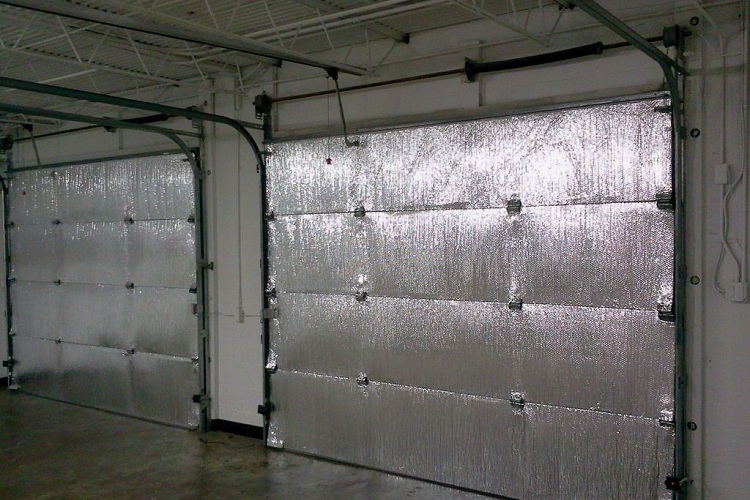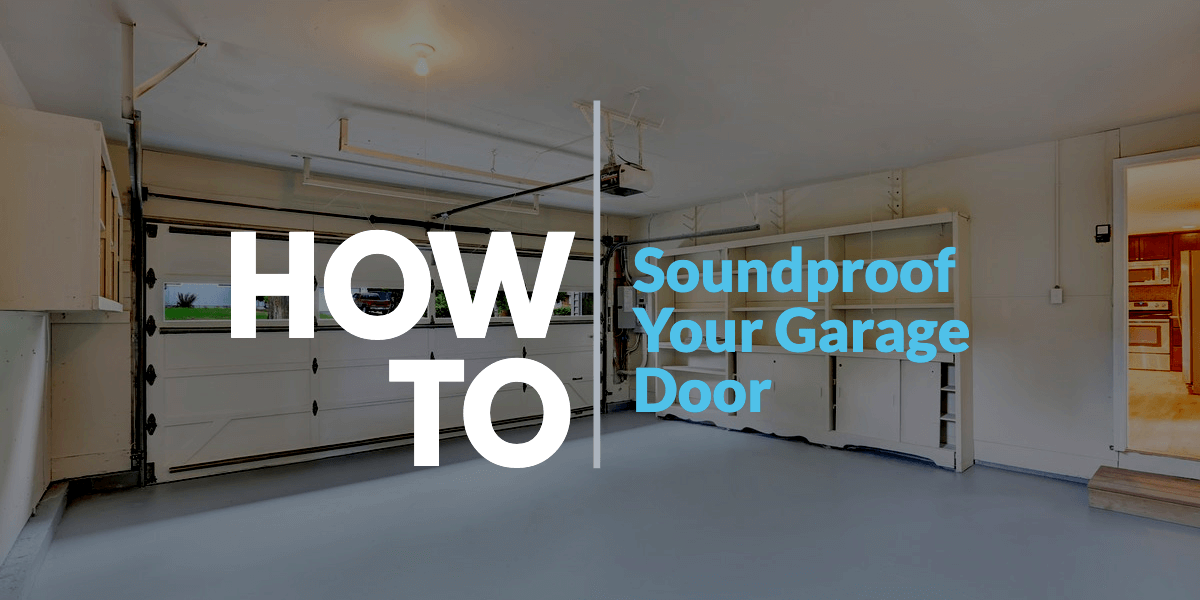Looking to soundproof your garage door? Discover the best methods to insulate it effectively!
If you’re tired of the noise from outside interrupting your peace and quiet, this article is for you. We’ll explore different ways to insulate your garage door and keep unwanted sounds at bay. With these tips, you’ll create a more peaceful and enjoyable space in no time.
Don’t let the sounds of traffic or the neighborhood disturb your sanctuary. Let’s dive into the best ways to soundproof your garage door and make your personal space as tranquil as can be.
1. Measure: Measure the dimensions of the garage door panels.
2. Choose Materials: Select soundproofing materials like foam panels or insulation kits.
3. Install Weatherstripping: Attach weatherstripping to the bottom of the garage door.
4. Apply Insulation: Attach the insulation material to each panel.
5. Seal Gaps: Seal any remaining gaps with caulk or weatherstripping tape.
With these steps, you’ll have a soundproofed garage door to enjoy!

What’s the Best Way to Insulate a Garage Door for Soundproofing?
When it comes to creating a peaceful and quiet environment in your home, soundproofing your garage door is an important step. Whether you use your garage as a workshop, gym, or simply want to reduce noise from outside, insulating your garage door can make a significant difference. In this article, we will explore the best ways to insulate a garage door for soundproofing, providing you with practical solutions and expert tips to achieve a quieter space.
Why Soundproofing Matters: Enhancing Your Living Space
Before we delve into the various methods of insulating a garage door, it’s important to understand why soundproofing matters. The noise and sounds that penetrate through your garage door can disrupt your daily activities, lower your comfort levels, and even affect your health. Excessive noise can lead to stress, lack of concentration, and sleep disturbances, which can have long-term consequences on your overall well-being. By soundproofing your garage door, you can create a peaceful oasis where you can work, relax, or pursue hobbies without any distractions or disturbances.
1. Weatherstripping: Getting Rid of Gaps
One of the most effective ways to insulate a garage door for soundproofing is by using weatherstripping. Weatherstripping involves sealing the gaps and cracks in your garage door to prevent noise from entering or leaving the space. It is a cost-effective and easy-to-install solution that can yield significant results. To weatherstrip your garage door, start by inspecting the door for any cracks or gaps. Apply adhesive-backed weatherstripping along the perimeter of the door, ensuring a tight seal. Additionally, install bottom seals to fill the gap between the door and the floor. Weatherstripping can reduce noise penetration by up to 50%, making it an excellent choice for soundproofing your garage door.
There are different types of weatherstripping materials available, including vinyl, rubber, and foam. Choose the material that best suits your needs and climate conditions. Remember to measure your garage door accurately and choose weatherstripping that adheres firmly and provides optimal insulation.
Besides soundproofing, weatherstripping also offers other benefits such as energy efficiency, preventing drafts, dust, and debris from entering your garage, and keeping pests away. It is a versatile solution that can make a significant difference in the comfort and functionality of your garage space.
2. Insulating Panels: Adding a Barrier
If you’re looking for a more robust and comprehensive soundproofing solution, insulating panels can be an excellent choice. Insulating panels are specially designed panels that fit inside the garage door and act as a barrier against sound waves. They are made from materials such as fiberglass, foam, and cellulose, which have excellent sound-absorbing properties. These panels not only reduce noise but also offer insulation against heat, cold, and moisture.
Installing insulating panels requires more effort and time compared to weatherstripping, but the results are worth it. Start by measuring the dimensions of your garage door and purchase the appropriate-sized panels. Remove the existing panels from your garage door and replace them with the insulating panels, ensuring a tight fit. Some panels come with adhesive backing, making installation easier. For added insulation and soundproofing, consider double-layered panels.
Insulating panels are an effective solution for soundproofing your garage door, but they also come with other benefits. They can help regulate temperature fluctuations, making your garage more comfortable throughout the year. Some panels also offer increased durability and can strengthen your garage door overall. It’s important to note that insulating panels may add weight to your garage door, so ensure that it can handle the additional load before installation.
3. Acoustic Blankets or Curtains: Softening the Noise
An alternative solution to consider for soundproofing your garage door is the use of acoustic blankets or curtains. These are dense and heavy curtains designed to absorb sound waves and reduce noise transmission. Acoustic blankets and curtains are made from sound-absorbing materials such as mass loaded vinyl, fiberglass, or foam, which effectively block and dampen sound vibrations.
To install acoustic blankets or curtains, measure the dimensions of your garage door and purchase curtains that fit snugly. Hang the curtains from a sturdy curtain rod or track, ensuring that they cover the entire surface of the garage door. For optimal soundproofing, you can also create a double-layered curtain system by hanging two sets of curtains.
Acoustic blankets and curtains not only reduce noise but also enhance the aesthetics of your garage. They are available in various colors and styles, allowing you to choose a design that complements your space. Additionally, they offer flexibility as they can be easily opened or closed when desired, giving you control over the level of soundproofing for different activities or times of the day.
4. Soundproofing Paint: A Thin Barrier
If you prefer a seamless and invisible soundproofing solution, soundproofing paint may be the answer. This specialized paint contains additives that enhance its sound-absorbing properties, creating a thin barrier against noise. Soundproofing paint is applied like regular paint, using a paint roller or brush, and dries to a smooth finish.
While soundproofing paint can provide a modest reduction in noise, it is important to manage expectations. It is best suited for smaller garage doors or areas where noise levels are not excessive. For optimum results, it is recommended to apply multiple coats of soundproofing paint and use it in conjunction with other soundproofing methods, such as weatherstripping or insulating panels.
It’s worth noting that soundproofing paint can also offer other benefits, such as humidity and moisture resistance, mold and mildew prevention, and easy maintenance. Additionally, it can be painted over with regular paint, allowing you to customize the color and finish to suit your preferences.
Key Takeaways: What’s the best way to insulate a garage door for soundproofing?
- 1. Install acoustic panels on the garage door to absorb sound waves.
- 2. Use weatherstripping or sealant to close gaps and prevent sound leakage.
- 3. Add an extra layer of insulation to the garage door, such as foam or fiberglass.
- 4. Consider using thick curtains or blankets as an additional sound barrier.
- 5. Proper maintenance of the garage door can help reduce noise transmission.
Frequently Asked Questions
Are you looking to soundproof your garage and wondering how to insulate your garage door effectively? We’re here to help! Check out these commonly asked questions about insulating garage doors for soundproofing and find the best way to achieve a quieter space.
1. What materials can I use to insulate my garage door for soundproofing?
There are various materials you can use to effectively insulate your garage door for soundproofing. One popular option is to use acoustic panels or boards made of high-density materials, such as sound-damping foam or mass-loaded vinyl. These materials are designed to absorb sound waves and reduce noise transmission. Another option is to install a double-layer of insulation by attaching two layers of fiberglass batt insulation or foam boards to your garage door.
Additionally, weatherstripping or weather sealing can be used to fill any gaps or cracks around the garage door to reduce noise infiltration. This involves using adhesive-backed rubber strips or seals along the edges of the door and bottom seal to create a tight seal and prevent sound leakage.
2. Can I use DIY methods to insulate my garage door for soundproofing?
Absolutely! There are several DIY methods you can employ to insulate your garage door for soundproofing. One option is to create your own soundproofing panels by attaching acoustic foam or mass-loaded vinyl to wooden frames that fit your garage door’s dimensions. These panels can be easily installed and removed as needed. Another DIY method is to apply a layer of soundproofing paint to your garage door. This specialized paint contains sound-damping properties and can help reduce noise transmission.
Furthermore, you can also use weatherstripping or weather sealing as a DIY method to fill gaps and cracks around the garage door. By applying adhesive-backed rubber strips or seals, you can effectively reduce sound leakage and enhance soundproofing.
3. Is it necessary to hire a professional to insulate my garage door for soundproofing?
While hiring a professional can ensure the job is done perfectly, it is not always necessary to hire one to insulate your garage door for soundproofing. Many homeowners have successfully soundproofed their garage doors using DIY methods mentioned earlier. However, if you have limited time, lack the necessary tools, or prefer professional expertise, hiring a specialist can be a convenient option.
Professional installation may be ideal if you are considering more elaborate soundproofing techniques like installing an additional layer or replacing the existing garage door with an insulated one. An experienced professional will have the knowledge and skills to handle these tasks effectively and efficiently.
4. How much does it cost to insulate a garage door for soundproofing?
The cost of insulating a garage door for soundproofing can vary depending on the materials used, the size of the garage door, and whether you choose to hire a professional or opt for DIY methods. If you choose to DIY, the cost will primarily be for the materials, which can range from $100 to $500, depending on the type of insulation and the size of your garage door.
If you decide to hire a professional, the cost will typically include the materials as well as the labor fees. Professional installation costs can range from $500 to $1500, depending on the complexity of the project and the area you live in. It’s recommended to get quotes from different professionals to compare prices and determine the most suitable option for your budget.
5. Besides soundproofing, are there any additional benefits to insulating my garage door?
Yes, insulating your garage door offers additional benefits beyond soundproofing. Insulation can help regulate the temperature inside your garage, providing better thermal control. This means your garage will stay cooler in the summer and warmer in the winter, making it more comfortable if you use it as a workspace or hobby area. Insulation also helps prevent drafts and can reduce energy loss, potentially leading to lower heating and cooling costs. Additionally, insulating your garage door can serve as a barrier against external noises, such as traffic or neighborhood sounds, creating a more peaceful environment overall.
Furthermore, an insulated garage door can improve the overall energy efficiency of your home, as it helps minimize heat transfer between your garage and the rest of your house. This can be especially beneficial if your garage is attached to your home, as it can reduce thermal bridging and save on heating and cooling expenses.

Summary
So, if you want to make your garage quieter, here are a few key takeaways. First, check for any gaps or cracks in your garage door and seal them with weatherstripping. Next, consider adding insulation to your garage door to absorb sound. You can use materials like foam panels or soundproof blankets. Lastly, don’t forget to think about the rest of your garage. Adding insulation to the walls and ceiling can also help reduce noise.

